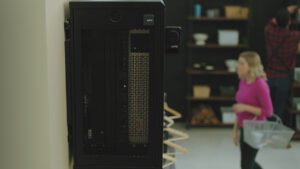Now more than ever, businesses are depending on the local edge for compute, storage, and/or networking close to the point of use. As an integral part of day-to-day business operations, these edge computing sites must be designed in a resilient way. While there are some fundamental needs that apply across the board, environmental differences from one edge site to the next can be significant, and these have an impact on how best to deploy the physical infrastructure to support and protect the critical IT devices. Consider the temperature and humidity, the security or access of the space, and even the purpose of the space… these would be very different for IT equipment mounted outdoors at a cell tower vs. in a climate-controlled commercial building. In White Paper 278, Three Types of Edge Computing Environments and their Impact on Physical Infrastructure Selection, which we recently released, we define three types of edge environments and provide best practices and guidance for the design of the power, cooling, security, etc. based on the risk factors of each environment.

Three types of edge computing environments
We believe there are three distinct environments: (1) IT environments, (2) commercial & office environments, and (3) industrial & harsh environments. In the image below, the business and IT risks grow from left to right.
IT environments
IT environments are temperature-controlled spaces with restricted access, designed for the purpose of securely housing the edge IT equipment. Think of your typical wiring closet or small computer room, except now these spaces often house greater compute power and more business-critical equipment which require a high level of resiliency and provide connectivity and interaction with a broader data center architecture (i.e. the cloud, regional data centers).
Cooling often goes overlooked in spaces like this with one or two racks, but depending on the density, some type of cooling may be necessary. If the density is less than 2kW/rack, fan-assisted ventilation is often sufficient, but when densities go up from there, dedicated systems like a DX system may be necessary to keep the temperatures within tolerance for the IT equipment.
Commercial & office space environments
Sometimes the local edge IT equipment is placed in a space with another primary purpose that is occupied by employees or customers – like a doctor’s office or a storefront. There are five key constraints in this type of space:
- Aesthetics – No one wants an eye-sore in a public or common space. The equipment should blend in discretely.
- Noise restrictions – Fan noise can be disruptive, frustrating, and annoying to occupants. Enclosures with noise dampening materials should be used.
- Thermal comfort – IT heat output can impact human comfort. Understand the limits of the comfort cooling system, as active cooling may be necessary.
- Space constraints – Floor space often comes at a premium. Wall-mount IT cabinets can optimize use of the space.
- Physical security – If occupants can walk up to it and touch it, malicious or accidental downtime risk exists. The IT enclosure housing the equipment should be locked, with limited access, in an inconspicuous location and with security camera coverage.
Industrial & harsh environments
This may be indoor or outdoor and is less controlled than the previous two environments. It may have wide temperature and humidity swings, may be exposed to dust or other contaminants, and may be subject to water. There’s a big spectrum of industrial/harsh environments, so it’s difficult to paint a broad brush. For instance, it could be a shipping warehouse, a manufacturing plant, a chemical plant, a telco cell tower, and so on. Potential risk factors for IT equipment in these spaces include:
- Temperature/humidity swings – Enclosures with air conditioning – either self-contained or exhaust to the building HVAC system, can regulate the temperature/humidity for the IT.
- Water leaks – Look for enclosures with the appropriate level of protection based on the water risks present. IEC and NEMA have ratings.
- Particles / dust – This can impact reliability and life expectancy of IT. The level of protection should be in line with the level of risk. IEC’s Ingress protection (IP) ratings verify a level of protection from particles an enclosure provides.
- Vibration – Machinery can produce vibration which can impact IT equipment. Use mitigation techniques like isolated spring mounts or rubber vibration isolation pads.
- Collision – Forklifts can present collision risk. Position the micro data center out of main traffic areas when possible and use concrete bollards to further reduce risks.
- Nuisance events – When the equipment is outdoors, this presents a bigger problem. Minimize visibility and reach to avoid vandalism or animals damaging wires, etc.
- Corrosion – Hard disk drives, servers, and printed circuit boards are susceptible to corrosion which can impact equipment reliability. Use enclosures made of appropriate materials or with coatings to protect from corrosion.
Learn more in our white paper
The key takeaway… know the type of environment for your micro data center, and design accordingly. Not all edge sites are created equal. In the white paper, we elaborate on all of the risks and design approaches that I touched on here. I encourage you to give it a read. Do you have any unique risks or design challenges at your edge sites?



